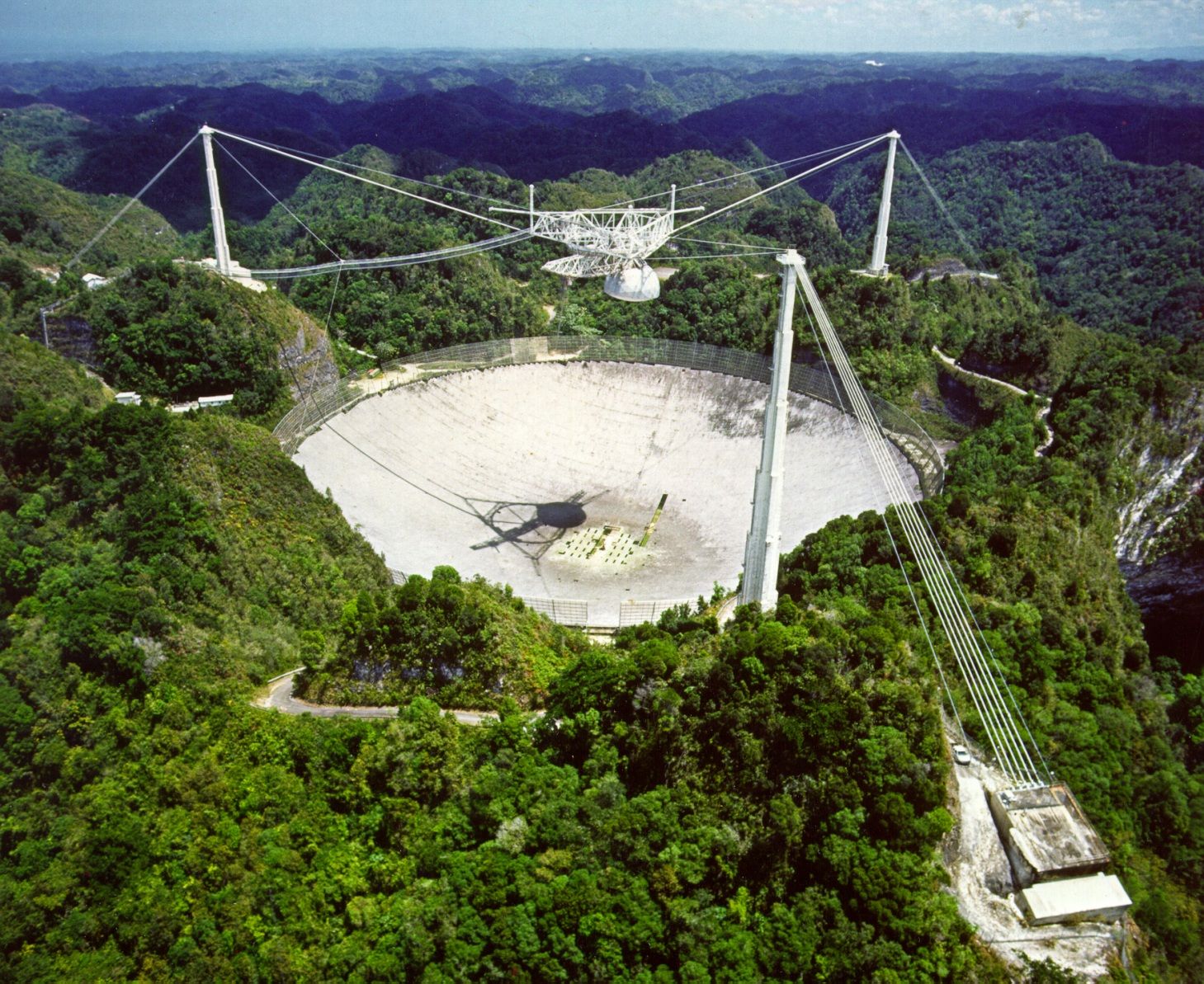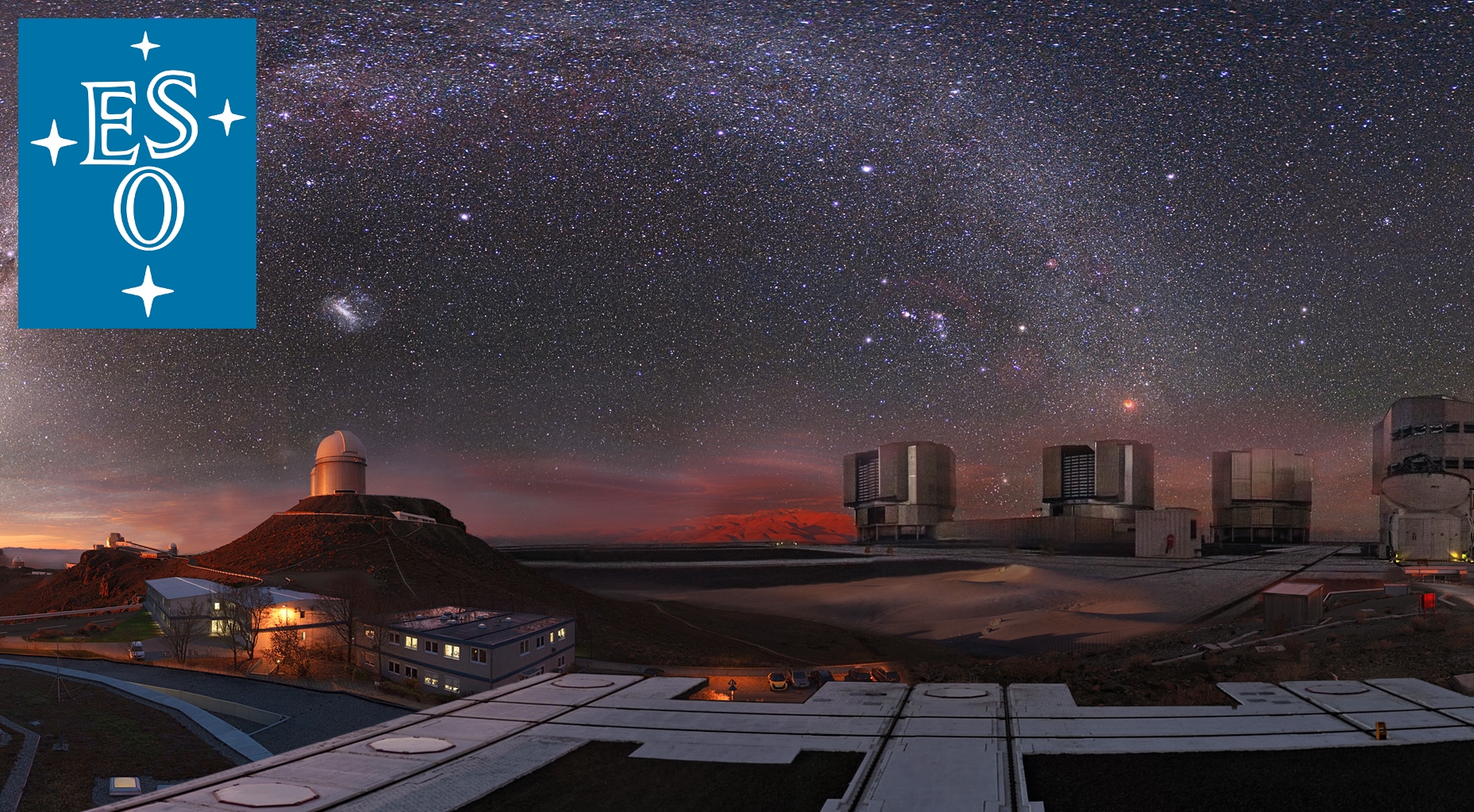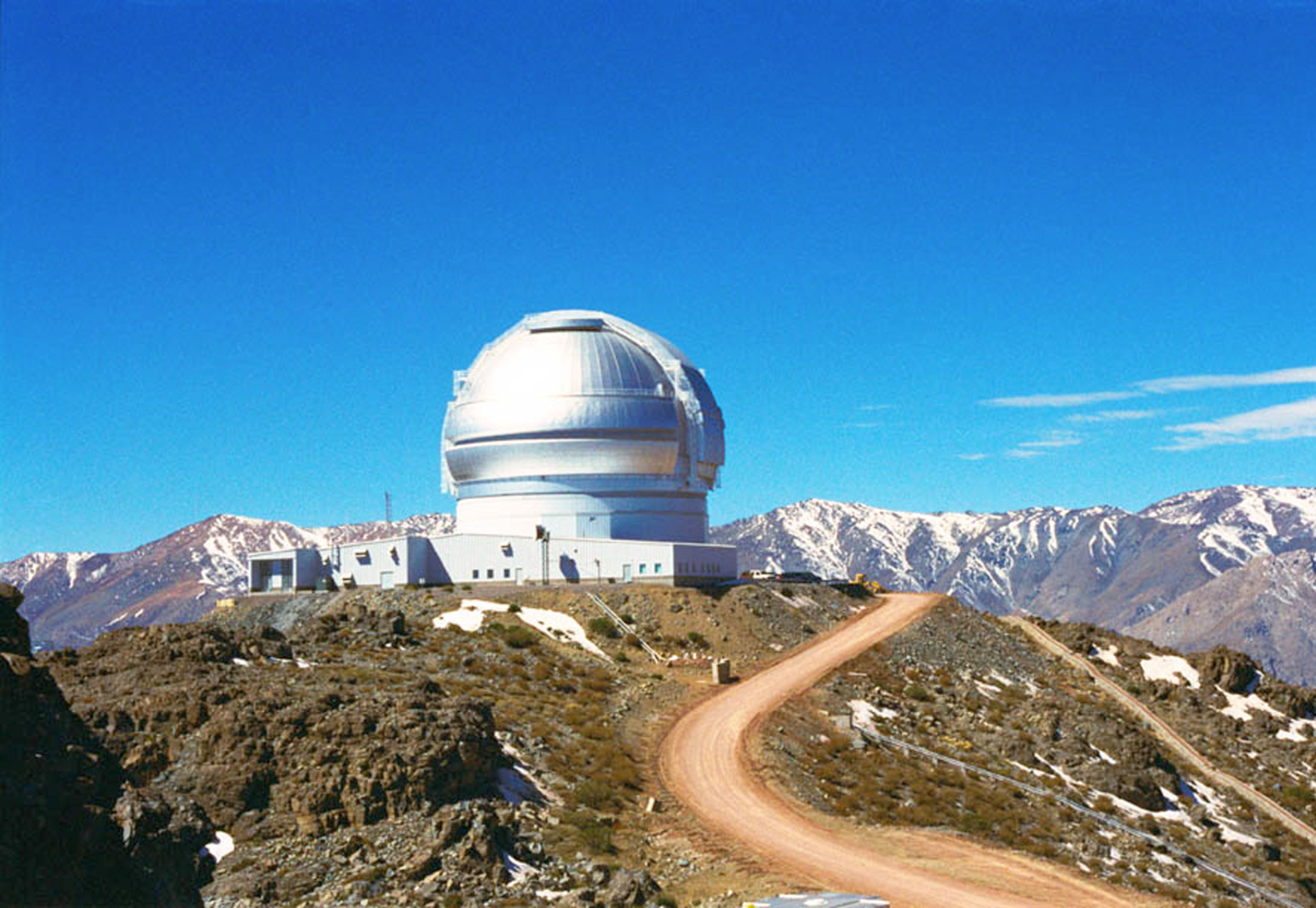
Deutsch-Chinesische Enzyklopädie, 德汉百科

Die Archenhold-Sternwarte ist eine Ende des 19. Jahrhunderts eingerichtete Volkssternwarte im Treptower Park im Berliner Ortsteil Alt-Treptow, Adresse Alt Treptow 1. Sie beherbergt den Großen Refraktor, das längste bewegliche Fernrohr der Welt (auch Himmelskanone genannt), das Ursache für ihre Errichtung war.[1][2] Die Einrichtung erhielt 1946 ihren Namen nach Friedrich Simon Archenhold, ihrem Gründer und ersten Direktor. Sie gilt als größte Volkssternwarte Deutschlands und als eine der ältesten.[3] (Die älteste ist die Urania, die bereits 1889 eröffnet wurde, heute aber nicht mehr als Sternwarte existiert.)


 Chinese Academy of Science
Chinese Academy of Science



 Aerospace
Aerospace
 National Astronomical Observatories,Chinese Academy of Sciences,NAOC
National Astronomical Observatories,Chinese Academy of Sciences,NAOC
 Xinjiang Uygur Zizhiqu-XJ
Xinjiang Uygur Zizhiqu-XJ

 Chinese Academy of Science
Chinese Academy of Science



 Aerospace
Aerospace
 National Astronomical Observatories,Chinese Academy of Sciences,NAOC
National Astronomical Observatories,Chinese Academy of Sciences,NAOC
 Yunnan Sheng-YN
Yunnan Sheng-YN




 Belgium
Belgium
 Brazil
Brazil
 Denmark
Denmark
 Germany
Germany
 European Southern Observatory
European Southern Observatory
 Finland
Finland
 France
France
 Italy
Italy



 Aerospace
Aerospace
 Netherlands
Netherlands
 Austria
Austria
 Portugal
Portugal
 Sweden
Sweden
 Switzerland
Switzerland
 Spain
Spain
 Czech Republic
Czech Republic
 United Kingdom
United Kingdom

 Science and technology
Science and technology

欧洲南方天文台 (The European Southern Observatory,ESO) 是为在南半球研究天文学,在政府间组织的一个研究机构,由15个国家组成和支援的一个天文研究组织。它成立于1962年,目的是为欧洲的天文学家提供先进的设施和捷径以研究南方的天空。这个组织的总部设在德国慕尼黑附近的加兴,雇用了约700名工作人员,每年并接受成员国约135亿欧元的经费[1]。
欧洲南方天文台建设和经营一些已知规模最大和技术最先进的望远镜,包括首创主动光学技术的新技术望远镜、和由4个8米等级的望远镜和4个1.8米辅助望远镜组成的甚大望远镜。目前由ESO进行的计划包括亚他加马大型毫米波阵列和欧洲极大望远镜。
ALMA是下一个十年最大的地面天文专案,将成为在毫米与次毫米波尺度下观测的主要新工具。他的建设正在进行中,预计于2013年完成。ALMA专案是欧洲各国、亚洲、北美洲和智利之间的国际合作计划。欧洲的执行权由ESO代表行使,并且还主持ALMA区域中心[2]。
E-ELT是40米等级的望远镜,目前还在细部设计阶段,将是世界上观测天空最大的巨眼。 欧洲极大望远镜,它将极有力的推动天文物理学的知识,能够仔细研究的天体,包括围绕着其它恒星的行星、宇宙中的第一个天体、超大质量黑洞、和主宰宇宙的暗 物质与暗能量的自然本质和分布。从2005年底,ESO就一直与工作和使用社群的欧洲天文学家和天文物理学家共同来定义此新的聚型望远镜[3]。
ESO的观测机构已经作出许多重大的天文发现和一些天体目录[4]。最近的研究结果包括发现最遥远的伽玛射线暴和我们的星系,银河系,中心有黑洞的证据。在2004年,甚大望远镜让天文学家获得第一张在173光年外环绕着的棕矮星的系外行星2M1207b轨道的绝佳影像。安装在ESO另一架望远镜上的仪器,高精度径向速度行星搜索器发现许多的系外行星,包括迄今发现最小的系外行星格利泽581c。甚大望远镜还发现了迄今距离人类最遥远星系的候选者阿贝尔1835 IR1916。
Die Europäische Organisation für astronomische Forschung in der südlichen Hemisphäre (englisch European Organisation for Astronomical Research in the Southern Hemisphere) oder in der Kurzform Europäische Südsternwarte (engl. European Southern Observatory, ESO) ist ein europäisches Forschungsinstitut, das Teleskope in Chile betreibt.
Die vielen Beobachtungseinrichtungen der ESO verhalfen der Astronomie zu zahlreichen Entdeckungen und produzierten einige astronomische Kataloge.
Unter anderen wurden an ESO-Observatorien der bis heute am weitesten entfernte Gammablitz beobachtet sowie Beweise für die Existenz eines Schwarzen Lochs im Zentrum unserer Milchstraße gefunden.
Die Zunahme der Expansionsgeschwindigkeit des Universums konnte basierend auf Beobachtungen weit entfernter Supernovae mit den Teleskopen auf La Silla gezeigt werden.[2]
Das Very Large Telescope (VLT, deutsch sehr großes Teleskop) konnte zum ersten Mal Kohlenmonoxid-Moleküle in einer Galaxie in einer Entfernung von etwa elf Milliarden Lichtjahren analysieren. Dies ermöglichte die Erlangung der präzisesten Messergebnisse der Temperatur für eine derart entfernte Epoche.[3]
Ebenso mit dem VLT konnten Astronomen das größte gemessene Alter eines Sterns in unserer Milchstraße bestimmen. Mit seinen 13,2 Milliarden Jahren wurde der Stern in einer der frühesten Phasen der Sternentstehung im Universum geboren.[4]
2004 konnte mit Hilfe des VLT das erste Bild eines extrasolaren Planeten (2M1207 b) aufgenommen werden. Seither konnten mit dem Spektrografen HARPS viele weitere extrasolare Planeten aufgespürt werden.
Nach in Summe über 1000 Beobachtungsnächten auf La Silla, die sich über 15 Jahre hin erstreckten, konnten die Bewegungsmuster von mehr als 14.000 sonnenähnlichen Sternen in Nachbarschaft der Sonne bestimmt werden. Es konnte somit gezeigt werden, dass unsere Heimatgalaxie ein turbulenteres und chaotischeres Leben durchmachte als zuvor angenommen wurde.[5]
ヨーロッパ南天天文台(ヨーロッパなんてんてんもんだい、European Southern Observatory、略称:ESO)は、ヨーロッパ14ヶ国およびブラジルが共同で運営する天文観測施設である。1964年に設立された。チリにある天文台を運営している。本部はミュンヘン近郊のGarchingにある。ラ・シヤ天文台(La Silla Observatory)、パラナル天文台(Paranal Observatory)、チャナントール天文台(Llano de Chajnantor Observatory)がおもな施設である。
The European Southern Observatory (ESO), formally the European Organisation for Astronomical Research in the Southern Hemisphere[2], is a 16-nation intergovernmental research organization for ground-based astronomy. Created in 1962, ESO has provided astronomers with state-of-the-art research facilities and access to the southern sky. The organisation employs about 730 staff members and receives annual member state contributions of approximately €162 million.[3] Its observatories are located in northern Chile.
ESO has built and operated some of the largest and most technologically advanced telescopes. These include the 3.6 m New Technology Telescope, an early pioneer in the use of active optics, and the Very Large Telescope (VLT), which consists of four individual 8.2 m telescopes and four smaller auxiliary telescopes which can all work together or separately. The Atacama Large Millimeter Array observes the universe in the millimetre and submillimetre wavelength ranges, and is the world's largest ground-based astronomy project to date. It was completed in March 2013 in an international collaboration by Europe (represented by ESO), North America, East Asia and Chile.[4][5]
Currently under construction is the Extremely Large Telescope. It will use a 39.3-metre-diameter segmented mirror, and become the world's largest optical reflecting telescope when operational in 2024. Its light-gathering power will allow detailed studies of planets around other stars, the first objects in the universe, supermassive black holes, and the nature and distribution of the dark matter and dark energy which dominate the universe.
ESO's observing facilities have made astronomical discoveries and produced several astronomical catalogues.[6] Its findings include the discovery of the most distant gamma-ray burst and evidence for a black hole at the centre of the Milky Way.[7][8] In 2004, the VLT allowed astronomers to obtain the first picture of an extrasolar planet (2M1207b) orbiting a brown dwarf 173 light-years away.[9] The High Accuracy Radial Velocity Planet Searcher (HARPS) instrument installed on the older ESO 3.6 m telescope led to the discovery of extrasolar planets, including Gliese 581c—one of the smallest planets seen outside the solar system.[10]
L’Observatoire européen austral (en anglais, European Southern Observatory : ESO), officiellement nommé l'Organisation européenne pour des observations astronomiques dans l’hémisphère austral1 (European Organisation for Astronomical Research in the Southern Hemisphere), est une organisation intergouvernementale pour l’astronomie fondée en 1962 par cinq pays européens, afin de créer un observatoire astronomique de pointe au sol dans l'hémisphère austral à disposition des astronomes.
L'ESO est l'acteur principal de l'astronomie observationnelle européenne. Il possède des télescopes allant de 2,2 à 8,20 mètres de diamètre, un parc d'une vingtaine d'instruments, dont 15 à Paranal, permettant des observations en imagerie, photométrie, spectroscopie, interférométrie dans à peu près toutes les longueurs d'onde allant du proche ultraviolet à l'infrarouge thermique (vers 20 microns). L'organisation possède également un système complet d'archivage des données, en partenariat avec l'agence de coordination entre l'Europe et le télescope spatial Hubble.
Son siège se trouve à Garching bei München près de Munich en Allemagne ; il dispose de bureaux au Chili à Vitacura dans la capitale Santiago du Chili. En 2018, l'organisation compte 16 états membres et trois sites d'observations, tous au Chili : l'Observatoire de La Silla, l'Observatoire du Cerro Paranal, où se trouve le Very Large Telescope, et l'Observatoire du Llano de Chajnantor.
L’Osservatorio Europeo Australe (ESO, dall'inglese European Southern Observatory, formalmente Organizzazione europea per la ricerca astronomica nell'emisfero australe) è un'organizzazione astronomica internazionale, di cui a settembre 2018 fanno parte sedici nazioni.[1] Creata nel 1962, l'ESO fornisce agli astronomi strumenti all'avanguardia e un accesso al cielo australe. L'organizzazione impiega circa 730 persone e riceve contributi annui di circa 143 milioni di Euro da parte degli Stati membri.[2]
ESO ha costruito e gestito alcuni dei più grandi e più avanzati telescopi del mondo, come il New Technology Telescope (NTT), il telescopio che lanciò la tecnologia dell'ottica attiva e il VLT (Very Large Telescope), composto da quattro telescopi principali (UT) con specchi primari di 8,2 metri di diametro e quattro telescopi ausiliari mobili (in inglese, Auxiliary Telescope, AT) di 1,8 metri di diametro. Ultimo progetto sviluppato da ESO è l'Atacama Large Millimeter Array (ALMA), mentre in fase di sviluppo si trova l'European Extremely Large Telescope (E-ELT).
Atacama Large Millimeter Array (ALMA) è un osservatorio rivoluzionario per l'osservazione dell'universo nelle radiazioni millimetriche/submillimetriche ed è attualmente il più grande progetto astronomico da terra. La sua costruzione è stata completata nel 2013. Il progetto ALMA è una collaborazione internazionale tra l'Europa (rappresentata da ESO), il sud est asiatico, l'America del Nord e la Repubblica del Cile.[3][4]
Uno dei più ambiziosi progetti di ESO è l'E-ELT (che sta per European Extremely Large Telescope), un telescopio di 39 metri di diametro, basato su un design innovativo con 5 specchi. Una volta costruito l'E-ELT sarà il più grande telescopio ottico/infrarosso al mondo. ESO ha cominciato la fase di design di questo telescopio all'inizio del 2006, con lo scopo di essere pronti a costruirlo nel 2014.[5] L'E-ELT dovrebbe essere pronto nel 2025. La grande capacità di accumulare la luce dell'E-ELT permetterà studi dettagliati di pianeti attorno ad altre stelle, dei primi oggetti dell'universo, di buchi neri supermassicci e della natura e della distribuzione della materia e dell'energia oscura che dominano l'universo.
I numerosi strumenti di osservazione di ESO hanno permesso molte scoperte astronomiche e prodotto diversi cataloghi astronomici.[6] Tra le più recenti scoperte: il più distante lampo gamma e il buco nero al centro della nostra galassia, la Via Lattea.[7][8] Nel 2004 il VLT ha dato agli astronomi la possibilità di ottenere la prima foto di un pianeta extra-solare, 2M1207b, che orbita attorno ad una nana bruna distante 173 anni-luce.[9] Lo spettrografo HARPS ha permesso la scoperta di molti altri pianeti extra-solari, incluso un pianeta 5 volte più pesante della Terra che orbita attorno ad una nana rossa, chiamato Gliese 581c.[10] Il VLT ha anche scoperto la galassia più lontana mai vista dall'uomo, Abell 1835 IR1916.
La Organización Europea para la Investigación Astronómica en el Hemisferio Austral (en inglés European Organisation for Astronomical Research in the Southern Hemisphere o European Southern Observatory), más conocida como el Observatorio Europeo Austral o Del Sur es una organización astronómica intergubernamental creada en el año 1962, dedicada a la astrofísica y al desarrollo y operación de telescopios en la Zona Norte de Chile.
Sus oficinas centrales están en Garching, cerca de Múnich, Alemania, y además cuenta con una oficina en Santiago, Chile.
Uno de los proyectos más destacados del ESO es el Telescopio Europeo Extremadamente Grande, la propuesta para la nueva generación de telescopios ópticos terrestres.
Европейская южная обсерватория, (англ. ESO, European Southern Observatory, официальное название — Европейская организация астрономических исследований в Южном полушарии) — международная исследовательская организация, членами которой являются 15 европейских государств и Бразилия.
Идея создания объединённой европейской обсерватории появилась в Лейденской обсерватории в Нидерландах весной 1953 года у Вальтера Бааде и Яна Оорта. 21 июня того же года Оорт собрал группу астрономов в Лейдене, чтобы обсудить возможность её создания. Позднее этот вопрос был поднят на Гронингской конференции, также проводившейся в Нидерландах. 26 января 1954 года декларация ESO была подписана ведущими астрономами шести европейских стран за создание совместной европейской обсерватории в южном полушарии.[1]
Выбор южного полушария был обоснован тем, что все крупные рефлекторные телескопы на тот момент находились в северном полушарии. Кроме того, многие объекты, такие как центральная часть Млечного Пути и Магеллановы облака, доступны только из южного полушария. Изначально планировалось, что телескопы будут располагаться в Южной Африке, однако в ходе наблюдений выяснилось, что условия в Южных Андах более предпочтительны, и 15 ноября 1963 года местом расположения обсерватории была выбрана Республика Чили.[2]
До принятия этого решения 5 октября 1962 года Бельгией, Германией, Францией, Нидерландами и Швецией была подписана Конвенция ESO, а на должность генерального директора был назначен Отто Хекман.
Первые телескопы ESO, расположенные в Ла-Силье, начали работать в 1966 году.[1] В 1980 году штаб-квартира европейского департамента ESO была перенесена в Гархинг под Мюнхеном, Германия.

 China
China
 Chinese Academy of Science
Chinese Academy of Science

 History
History
 N 2000 - 2100 AD
N 2000 - 2100 AD
 Guizhou Sheng-GZ
Guizhou Sheng-GZ



 Aerospace
Aerospace
 National Astronomical Observatories,Chinese Academy of Sciences,NAOC
National Astronomical Observatories,Chinese Academy of Sciences,NAOC

 Science and technology
Science and technology
 Technology concepts
Technology concepts

Das Five hundred meter Aperture Spherical Telescope (kurz FAST) ist ein Radioteleskop mit über 500 Meter Durchmesser.
Es befindet sich seit 2011 im Pingtang-Kreis in der Provinz Guizhou im Südwesten von China im Bau. Es soll 2016 fertiggestellt und das größte und genaueste Radioteleskop der Welt werden. Die Kosten sollen 1200 Millionen Yuan betragen (166 Mio. €). Das Gelände wurde unter 30 möglichen Standorten in einer natürlichen Karstdepression gewählt. Die Anlage ist baulich ähnlich dem Arecibo-Observatorium.[1]
Die Anlage ist flexibel aufgebaut und kann die Form der Hauptantenne anpassen, dies ermöglicht Beobachtungen bis zu einer Neigung von bis zu 40° aus dem Zenit. Genutzt wird der Frequenzbereich von 0.3-3.0 GHz, das Teleskop soll eine Genauigkeit von vier Bogensekunden erreichen.[2][3]
500メートル球面電波望遠鏡(中国語: 五百米口径球面射电望远镜、FAST、Five-hundred-meter Aperture Spherical radio Telescope)は、中国南西部の貴州省黔南プイ族ミャオ族自治州平塘県にある、世界最大の電波望遠鏡。中国科学院国家天文台により建設された。中国で「天眼の父」[1]と呼ばれている高名な満州族[2]科学者である同天文台の南仁東が、この計画の責任者を務めた。建設費は約12億元(約185億円)といわれている。
4,450枚(記事によっては4,600枚)の三角形の反射パネルを組み合わせ、固定球面鏡を形成し、望遠鏡直径は本望遠鏡完成まで世界最大であったアレシボ天文台より300メートル大きい500mである。
自然のくぼ地(大窩凼窪地)[3] を利用して作られている[4]。
球面鏡であり、受信機は500mの鏡面全体をカバーすることはできず、有効直径として機能するのは300m分である。地面に固定されているため、観測可能範囲は天頂から40度の範囲までである。観測周波数は0.3-5.1GHzを、指向精度は4秒角を見込んでいる[5]。
当施設建設に際し、地上からの電波や光の干渉を取り除く為、周囲5kmに渡る「緩衝圏」と称すエリアと、その周囲に観光客の為の公園(博物館や宇宙をテーマにしたホテル及びレセプション施設が入る。総工費15億元(約248億円)と、望遠鏡施設より高い)が建設予定となっており、その実行の為、約1万人(報道によっては約9,000人)とも言われる住民を移住させる方針が発表され、国営メディアの新華社は「近隣の人々はその幸運をうらやましがっている。彼らは宇宙人に感謝すべきだ」と報じるも当局の強引なやり方に対する地元住民による訴訟も起きている[6]。
The Five-hundred-meter Aperture Spherical radio Telescope (FAST; Chinese: 五百米口径球面射电望远镜), nicknamed Tianyan (天眼, lit. "Sky Eye" or "The Eye of Heaven") is a radio telescope located in the Dawodang depression (大窝凼洼地), a natural basin in Pingtang County, Guizhou Province, southwest China.[1] It consists of a fixed 500 m (1,600 ft) diameter dish constructed in a natural depression in the landscape. It is the world's largest filled-aperture radio telescope,[2] and the second-largest single-dish aperture after the sparsely-filled RATAN-600 in Russia.[3][4]
It has a novel design, using an active surface made of metal panels that can be tilted by a computer to help change the focus to different areas of the sky.[5] The cabin containing the feed antenna suspended on cables above the dish is also moved using a digitally-controlled winch by the computer control system to steer the instrument to receive from different directions.
Construction on the FAST project began in 2011 and it achieved first light in September 2016.[6] It is currently undergoing testing and commissioning.[7] It observes at wavelengths of 10 cm to 4.3 m.[3]:11[8]
The telescope made its first discovery of two new pulsars in August 2017, barely one year after its first light.[9] The new pulsars PSR J1859-01 and PSR J1931-02, which are also referred to as FAST pulsar #1 and #2 (FP1 and FP2), were detected on 22 and 25 August and are 16,000 and 4,100 light years away, respectively. They were independently confirmed by the Parkes Observatory in Australia on 10 September. The telescope had discovered 44 new pulsars by September, 2018.[10][11][12]
Le radiotélescope sphérique de cinq cents mètres d'ouverture (chinois traditionnel : 五百米口徑球面射電望遠鏡 ; chinois simplifié : 五百米口径球面射电望远镜 ; pinyin : ), abrégé en anglais FAST pour Five-hundred-meter Aperture Spherical Radio Telescope1, est un radiotélescope situé dans un bassin naturel du comté de Pingtang, dans le Guizhou, dans le sud-ouest de la Chine. Le radiotélescope est mis en service le 25 septembre 2016. Il est le deuxième plus grand radiotélescope au monde après le RATAN-600 en Russie et le plus grand radiotélescope à un seul appareil, avec une sensibilité égale à environ trois fois celle du radiotélescope d'Arecibo.
Il FAST, acronimo di Five hundred meter Aperture Spherical Telescope ("Telescopio sferico con apertura di cinquecento metri"; in cinese: 五百米口径球面射电望远镜), è un radiotelescopio collocato nel sudovest della Cina, posizionato nella concavità di un bacino naturale (cinese: 大窝凼洼地; letteralmente: "depressione Da Wo Dang") nella contea di Pingtang, nella provincia del Guizhou.
Il progetto per la costruzione del FAST ha avuto inizio nel 2011 ed è stato completato a settembre 2016. Attualmente è il radiotelescopio più grande e più sensibile al mondo, tre volte più sensibile del radiotelescopio dell'Osservatorio di Arecibo.[1][2] Il suo costo previsto di 700 milioni di yuan[3] (circa 110 milioni di dollari statunitensi o 100 milioni di euro) è lievitato fino a raggiungere il valore finale di 1,2 miliardi di yuan (circa 160 milioni di euro)[4].
El Telescopio esférico de quinientos metros de apertura (FAST) (chino: 五百米口径球面射电望远镜) o Tianyan (en chino: 天眼: 天眼) es un radiotelescopio localizado en una cuenca natural de Da Wo Dang (en chino: 五百米口径球面射电望远镜: 大窝凼洼地), en el Condado de Pingtang, provincia Guizhou, al suroeste de China.2
La construcción del proyecto FAST empezó en 2011, y logró su primera luz el 25 de septiembre de 2016. Está actualmente bajo pruebas y puesta en servicio. Es el segundo radiotelescopio más grande del mundo después del ruso RATAN-600, el cual tiene una apertura de baja densidad de llenado.34 Su presupuesto fue de 700 millones de yuan5 (alrededor 110 millones dólares) y su costo final fue de 1 200 millones de yuan6 (unos 180 millones de dólares).
FAST (кит. 五百米口径球面射电望远镜, англ. Five hundred meter Aperture Spherical Telescope — «Сферический радиотелескоп с пятисотметровой апертурой») — радиотелескоп на юге Китая в провинции Гуйчжоу[2][3]. На строительство радиотелескопа было затрачено более 185 миллионов долларов[4].
После окончания строительства в 2016 году и сдачи в эксплуатацию FAST стал самым большим в мире радиотелескопом с заполненной апертурой, его диаметр — 500 метров. Существует радиотелескоп с незаполненной апертурой большего диаметра — российский 576-метровый радиотелескоп РАТАН-600[5].
Радиотелескоп позволит учёным изучать формирование и эволюцию галактик, тёмную материю, исследовать объекты эпохи реионизации и решать другие научные задачи[6].
 Argentina
Argentina
 Australia
Australia
 Brazil
Brazil
 Chile
Chile

 Hawaii-HI
Hawaii-HI
 Canada
Canada



 Aerospace
Aerospace
 National Optical Astronomy Observatory
National Optical Astronomy Observatory
 United States
United States
 United Kingdom
United Kingdom

 Astronomy
Astronomy
 Berlin
Berlin
 Vacation and Travel
Vacation and Travel
 New South Wales-NSW
New South Wales-NSW
 Balearic Islands
Balearic Islands